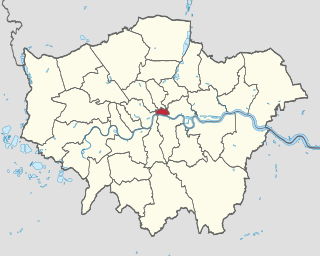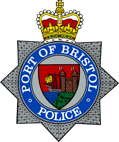Related Research Articles
A constable is a person holding a particular office, most commonly in criminal law enforcement. The office of constable can vary significantly in different jurisdictions. A constable is commonly the rank of an officer within the police. Other people may be granted powers of a constable without holding this title.

The City of London Police is the territorial police force responsible for law enforcement within the City of London, including the Middle and Inner Temples. The force responsible for law enforcement within the remainder of the London region, outside the City, is the much larger Metropolitan Police Service, a separate organisation. The City of London, which is now primarily a financial business district with a small resident population but a large commuting workforce, is the historic core of London, and has an administrative history distinct from that of the rest of the metropolis, of which its separate police force is one manifestation.

Billingsgate Fish Market is located in Canary Wharf in London. It is the United Kingdom's largest inland fish market. It takes its name from Billingsgate, a ward in the south-east corner of the City of London, where the riverside market was originally established. In its original location in the 19th century, Billingsgate was the largest fish market in the world.
Most of the police forces of the United Kingdom use a standardised set of ranks, with a slight variation in the most senior ranks for the Metropolitan Police and City of London Police. Most of the British police ranks that exist today were chosen by Home Secretary Sir Robert Peel, the founder of the Metropolitan Police, enacted under the Metropolitan Police Act 1829. The ranks at that time were deliberately chosen so that they did not correspond with military ranking, because of fears of a paramilitary force.

New Spitalfields Market is a fruit and vegetable market on a 31-acre (13 ha) site in Leyton, London Borough of Waltham Forest in East London. The market is owned and administrated by the City of London Corporation. The market is Europe's leading horticultural market specialising in exotic fruit and vegetables - and the largest revenue earning wholesale market in the UK.

Hampshire Constabulary is the territorial police force responsible for policing the counties of Hampshire and the Isle of Wight in South East England, United Kingdom.
Newham Community Constabulary, formerly called Newham Parks Constabulary, was a very small non-Home Office constabulary responsible for patrolling the 52 parks and open spaces covering 1.63 square miles in the London Borough of Newham.

The Port of Bristol Police (PoBP) is a ports police force with responsibility to protect the port complexes and community situated at the mouth of the River Avon on the border between Bristol and Somerset. Officers are attested under powers in legislation derived from the Harbours, Docks and Piers Clauses Act 1847.
The Hammersmith and Fulham Parks Constabulary was a small constabulary responsible for policing the parks and open spaces of the London Borough of Hammersmith and Fulham. In 2013, it merged with the Royal Borough of Kensington and Chelsea Parks Police to form the Parks Police Service.
The Royal Borough of Kensington and Chelsea Parks Police is a body of constables responsible for policing the parks and open spaces of the London Borough of Kensington and Chelsea. In 2013, it was merged with the Hammersmith and Fulham Parks Constabulary to form the Parks Police Service. Then, in July 2019 The Royal Borough of Kensington and Chelsea Parks Police moved away from The London Borough of Hammersmith and Fulham Parks Constabulary, once again becoming a single service.

York Minster Police is a small, specialised cathedral constabulary responsible for security in York Minster and its precincts in York, United Kingdom.
Falmouth Docks Police is non-Home Office ports police force whose primary role is security of Falmouth Docks. As of 2007 the constabulary numbered just four constables.

Sillitoe tartan is the nickname given to the distinctive black and white chequered pattern, correctly known as dicing, which was originally associated with the police in Scotland. It later gained widespread use in the rest of the United Kingdom and overseas, notably in Australia and New Zealand, as well as Chicago and Pittsburgh in the United States. It is used occasionally elsewhere, including by some Spanish municipal police and in parts of Canada, where it is limited to auxiliary police services.

A cathedral constable is a constable employed by a cathedral of the Church of England. They have been appointed under common law and cathedral statutes for nearly 800 years.
A special constable or special police constable is generally an auxiliary or part-time law enforcement officer.
Liverpool Parks Police was a police force maintained by the Corporation of Liverpool to police the parks and open spaces owned by the city. The first record of "park constables" in Liverpool is from 1832, although members of the force were not sworn in as constables in their own right until 1882. The force was disbanded in 1972.

The Canterbury Cathedral Close Constables are a police force employed by Canterbury Cathedral to maintain order and security in and around the cathedral. They have the same police powers as regular police in the United Kingdom, including the power of arrest, within the cathedral and its precincts.
The Havering Parks Constabulary is a body of constables responsible for policing the parks and open spaces of the London Borough of Havering.
The Hampstead Heath Constabulary (HHC) is the organisation that patrols Hampstead Heath, London, which is administered by the City of London.
References
- ↑ "Billingsgate Market > About Billingsgate". City of London website. City of London. Archived from the original on 13 June 2011. Retrieved 2 March 2011.
- ↑ "New Spitalfields Market > About Spitalfields". City of London website. City of London. Archived from the original on 29 September 2011. Retrieved 2 March 2011.
- ↑ "Wards > Farringdon without". City of London Police website. City of London Police. Archived from the original on 18 August 2010. Retrieved 2 March 2011.
- ↑ "City of London market constabularies - a Freedom of Information request to City of London Corporation". December 2017.